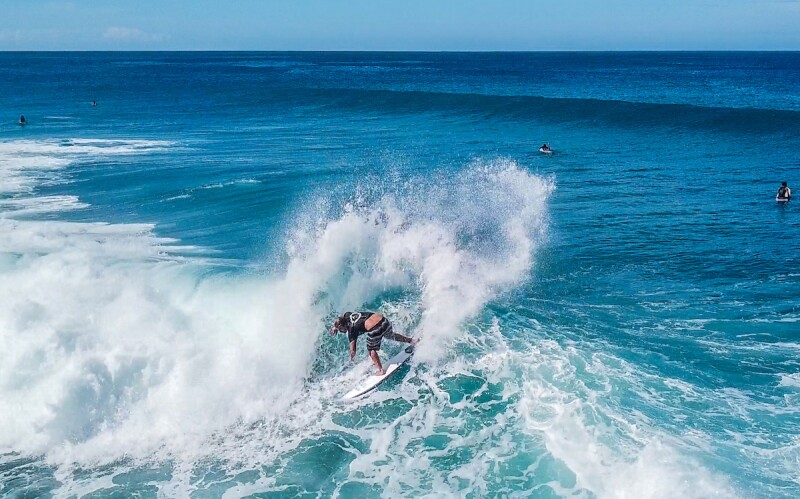Listen up. After the silence of winter, a trip to Puerto Rico is a warm and welcome listening experience. Celebrated for its beaches, climate, and its inhabitants’ friendliness, the Caribbean island also offers an intriguing sonic landscape bursting with natural noises, music, and conversation. A visit is like slipping into a sound bath, the technique used by audio therapists to relieve stress, making for just the retreat needed right now or anytime. Eavesdrop on the hoots, chirps, and peeps in its 36 nature reserves and 19 state forests. Savor the crash of surf along nearly 300 miles of coastline fringed with sandy beaches, luxurious resorts, and kick-back surfing towns while beneath the water, schools of iridescent fish swim with a gentle whisper. And tune-in to the sophisticated hubbub of San Juan, Bayamón, and Ponce, cities where restaurants, shops, and streets all move to a Latin beat and the hum of history and are accessible to anyone.
To celebrate this symphonic tapestry, Discover Puerto Rico captured the island’s sounds in a project called “Sounds Like Puerto Rico.” The stories, including a video series (available here), inspired us to build this “playlist” of our own favorite auditory experiences on the island.
Puerto Rico is committed to providing a safe travel experience. Check out the Visitor Health & Safety Guidelines to learn how the island is prioritizing traveler safety and to get an idea of what to expect upon arrival.
Nature (sound tracks)

Nature’s soundtrack floats through the valleys and mountains of Puerto Rico’s interior, where visitors become explorers and discover a rich agricultural heritage. Listen to the patter of rain on coffee plants of the island’s historic plantations. Like Napa or Sonoma wineries, Puerto Rico’s coffee-growers offer tours and tastings, too. A few examples include San Lorenzo’s Hacienda Muñoz; Hacienda Buena Vista in Ponce; and environmentally friendly Sandra Farms in Adjuntas. Visitors learn how coffee is planted, grown, and harvested before savoring a cup.

Pithaya Glamping
Birdsong is everywhere, and bird-watching is popular on an island sheltering more than 300 species, with 17 found only here, including indigenous screech owls, flycatchers, and—perhaps the most famous—the Puerto Rican Parrot, brought back from the brink of extinction with a captive breeding program. Birding destinations include Toro Negro State Forest and Humacao Nature Reserve. And no visitor needs to strain their ears for too long to hear the coquí. The ubiquitous small tree-frog with a distinctive peep is the island’s symbol. Listen for them in El Yunque National Forest on the island’s eastern side. The home of Taíno gods and spirits, El Yunque is the U.S. National Forest Service’s only tropical rainforest. It contains more than 200 types of trees and 13 types of coquí.
Beach bliss (sound waves)
Visitors will hear a slower, more blissful beat on the island’s coast. The sounds of crashing waves and rustling palms invite them to distance, kick off their

Chase Walker
shoes, and wander uncrowded, sandy beaches or doze off poolside in an upscale resort. They’ll catch the rolling breakers on Puerto Rico’s northwest coast, home to the island’s (and the Caribbean’s) first surfing reserve at Aguadilla. Island-born pros such as Otto Flores and Brian Toth have popularized the sport. At the same time, Playa Jobos, near the town of Isabela, offers the chance for surf lessons. The smack of fins on water signal snorkeling opportunities in islets and cays like those at La Cordillera Nature Reserve off the coast of Fajardo and La Chiva in Vieques. For anyone desiring tranquility, perhaps the loudest sounds in any of the coastal resorts will be the murmurs of laughter and the “pop!” of an uncorking wine bottle. The focus here is on serenity and recovery, with plenty of time to indulge in spa treatments at properties like Villa Montaña Beach Resort; Copamarina Beach Resort & Spa; and Dorado Beach, a Ritz-Carlton Reserve.
Urban rhythms (sound stages)

Pick up the exuberant rhythm of Puerto Rico’s cities, vital communities bursting with expression in music like salsa and reggaetón (a mix of rap, reggae, and Spanish vocals), in the arts, and even in the language itself. In San Juan, improvise your own beat by exploring the capital’s outdoor neighborhoods to discover impromptu street concerts, open-air cafes, and beer gardens. For a longer perspective, wander Old San Juan and discover its historic architecture, including El Morro, a 16th century, six-level fortress that’s now a World Heritage site.
In the restaurants on Calle Loíza and Calle Fortaleza the clink of rum glasses and clatter of plates signal the creativity of the island’s cuisine. Molinis Café and Marmalade are two featuring curbside service. And while restaurants offer reduced capacity, “to-go” options like the Lote 23 and Miramar food truck parks allow anyone to sample the island’s fare while letting the hum of nearby conversations envelop them.
Puerto Rican Spanish is unique, with a rich vocabulary reflective of the island’s multicultural heritage. The indigenous Taíno people gave the world words such as “hammock,” “canoe,” and “hurricane,” while Puerto Rico’s coffee culture possesses its own colorful terminology. Visitors may know café con leche, but how about medio pocillo (a half a cup)? Café puya is black coffee without sugar; a café bibi (baby bottle) is only a splash of espresso but a lot of milk.
From the urban beat of reggaetón to the plash of forest waterfalls, the island’s varied soundscapes offer travelers excitement, wonder, or serenity. Whatever the ambiance, Puerto Rico is busy creating a unique tune to accompany it.











